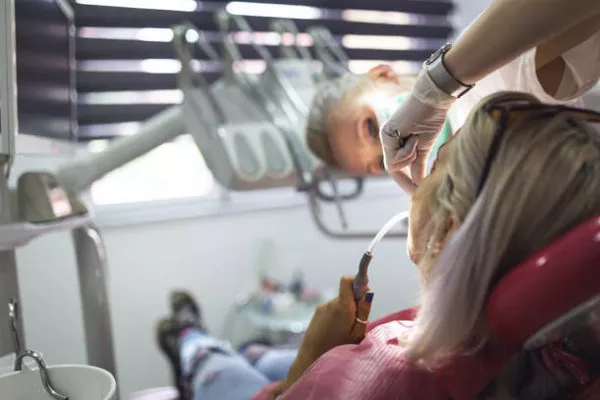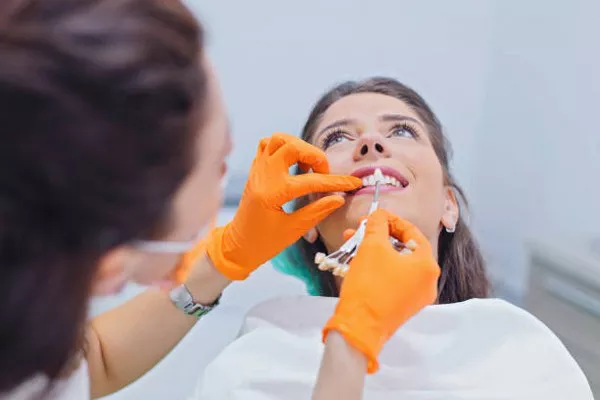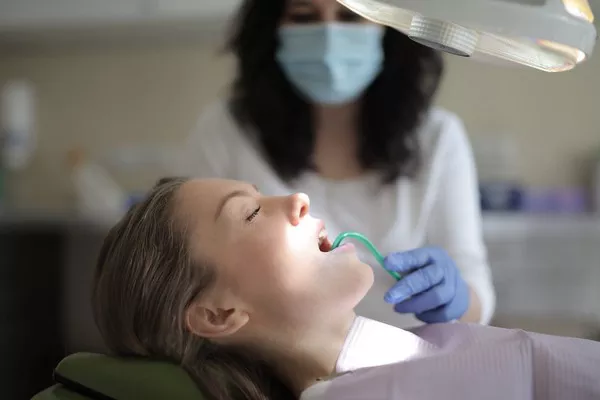Whitening strips have become a popular option for those seeking a brighter smile without the hassle and cost of professional dental treatments. These thin, flexible strips are coated with a whitening gel containing active ingredients like hydrogen peroxide or carbamide peroxide. Users apply them directly to the surface of their teeth for a specified amount of time, typically once or twice a day for a week or more, depending on the product and desired results.
Active Ingredients
The active ingredients in whitening strips, namely hydrogen peroxide or carbamide peroxide, work by penetrating the enamel of the teeth and breaking down stains. Hydrogen peroxide, in particular, is highly reactive and produces oxygen radicals that oxidize the colored compounds within the tooth, resulting in a whitening effect. Carbamide peroxide, on the other hand, breaks down into hydrogen peroxide and urea, amplifying the whitening process.
Potential Risks
While whitening strips can effectively remove stains and brighten teeth, there are potential risks associated with their use, primarily concerning tooth enamel and dentin. Enamel is the hard, outer layer of the tooth, while dentin lies beneath it and comprises the bulk of the tooth structure. Both enamel and dentin can be affected by the active ingredients in whitening strips.
Research suggests that hydrogen peroxide, when used in high concentrations or for prolonged periods, can damage tooth enamel. A study published in the Journal of Dentistry found that teeth treated with hydrogen peroxide showed increased surface roughness and decreased microhardness, indicating potential enamel erosion. Similarly, another study in the Journal of Clinical and Experimental Dentistry reported that carbamide peroxide-based whitening products caused significant changes in the microhardness and mineral content of enamel.
In addition to enamel damage, whitening strips may also affect the underlying dentin. Dentin hypersensitivity, characterized by sharp pain or discomfort when exposed to hot, cold, or acidic stimuli, can occur as a result of enamel erosion or irritation of the tooth nerves. The bleaching agents in whitening strips can exacerbate dentin hypersensitivity by penetrating the enamel and reaching the dentin layer.
see also: The Fastest Way To Whiten Teeth At Home
Symptoms of Damage
Recognizing the signs of potential damage from whitening strips is essential for maintaining oral health. Symptoms may vary from person to person, but common indicators include:
- Increased tooth sensitivity, especially to hot, cold, or sweet stimuli.
- Gum irritation or inflammation, such as redness, swelling, or bleeding.
- Changes in tooth color or transparency, indicating enamel erosion.
- Toothache or discomfort, particularly during or after whitening treatments.
If any of these symptoms persist or worsen, it is crucial to discontinue whitening strip use and consult a dental professional promptly.
Pros and Cons
As with any dental treatment, whitening strips have both advantages and disadvantages. On the positive side, they offer a convenient and relatively affordable way to improve the appearance of teeth without the need for professional intervention. Many users report noticeable whitening results after just a few days of use, making them an attractive option for those seeking quick cosmetic enhancement.
However, it’s essential to weigh these benefits against the potential risks associated with whitening strips. While enamel erosion and tooth sensitivity are relatively common side effects, they can vary in severity depending on factors such as the concentration of the whitening agent, duration of use, and individual susceptibility. Furthermore, whitening strips may not be suitable for everyone, especially those with pre-existing dental conditions such as cavities, gum disease, or tooth sensitivity.
Safe Usage Guidelines
To minimize the risks of damage from whitening strips, it’s crucial to follow safe usage guidelines:
- Read and follow the manufacturer’s instructions carefully, including recommended usage frequency and duration.
- Avoid overuse or prolonged exposure to whitening agents, as this can increase the risk of enamel erosion and tooth sensitivity.
- Use a lower concentration of whitening gel if you have sensitive teeth or gums, and consider consulting a dental professional for personalized recommendations.
- Take breaks between whitening treatments to allow the teeth to recover and minimize potential damage.
- Maintain good oral hygiene practices, including brushing with a fluoride toothpaste and flossing regularly, to protect enamel and overall dental health.
see also: Does Uv Light Help Teeth Whitening
Alternatives
For those concerned about the potential risks of whitening strips or seeking alternative methods for teeth whitening, several options are available:
- Professional dental treatments, such as in-office bleaching or custom-made whitening trays, offer supervised and controlled whitening procedures with potentially fewer risks.
- Over-the-counter whitening toothpaste or mouthwash may provide a milder alternative for maintaining a brighter smile without the use of peroxide-based bleaching agents.
- Lifestyle modifications, such as reducing consumption of stain-causing foods and beverages like coffee, tea, and red wine, can help prevent tooth discoloration and maintain oral health.
- Natural remedies, such as oil pulling with coconut oil or using baking soda as a gentle abrasive, may offer mild whitening effects without the potential risks associated with chemical bleaching agents.
Professional Advice
Ultimately, the decision to use whitening strips should be made in consultation with a dental professional, especially for individuals with underlying dental issues or concerns. A dentist can assess the condition of your teeth, recommend appropriate whitening treatments based on your specific needs and oral health status, and provide guidance on safe usage practices to minimize the risk of damage.
Conclusion
While whitening strips can be an effective and convenient option for achieving a brighter smile, they are not without potential risks to tooth enamel and dentin. By understanding the active ingredients, potential risks, and safe usage guidelines, individuals can make informed decisions about whether whitening strips are suitable for them and take steps to protect their oral health accordingly. Consulting with a dental professional is key to ensuring safe and effective teeth whitening outcomes while minimizing the risk of damage to teeth and gums.
FAQs about Teeth Whitening
1. Do Dentists Recommend Whitening Strips?
While some dentists may recommend whitening strips as an affordable and convenient option for teeth whitening, opinions can vary among dental professionals. Whitening strips are generally considered safe when used as directed, but individual recommendations may depend on factors such as the patient’s oral health, sensitivity levels, and desired results. It’s always a good idea to consult with your dentist before starting any whitening treatment to ensure it’s suitable for your specific needs.
2. Can Whitening Strips Break Your Teeth?
When used properly, whitening strips are unlikely to break your teeth. However, incorrect application or excessive force when removing the strips could potentially cause damage. It’s essential to follow the instructions carefully and gently remove the strips after each use. If you experience any discomfort or notice unusual changes in your teeth or gums while using whitening strips, discontinue use and consult your dentist.
3. What Is the Safest Way to Whiten Teeth?
The safest way to whiten teeth is under the guidance of a dental professional. Dentists can recommend or provide in-office treatments that are tailored to your specific needs and oral health condition. These treatments often use higher concentrations of whitening agents and are closely monitored to minimize potential side effects. Additionally, practicing good oral hygiene, including regular brushing, flossing, and dental check-ups, can help maintain a healthy and bright smile.
4. Why Are Crest Strips Banned in the UK?
As of my last update in January 2022, Crest Whitestrips were not banned in the UK. However, it’s essential to note that regulations regarding the sale and use of teeth whitening products may vary between countries. In the past, some whitening products containing higher concentrations of hydrogen peroxide, such as those used in professional dental settings, have faced restrictions in the EU due to safety concerns. It’s always advisable to check the latest regulations and consult with dental professionals before using any whitening products.
You Might Be Interested In
































